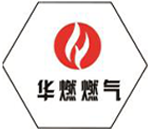
Aug . 17, 2024 01:26
Back to list
Pressure Management Techniques for Effective Organization and Control
Understanding Pressure Regulation Mechanisms
Pressure regulation is a critical component in various industrial applications, ensuring the safe and efficient operation of systems that rely on fluid or gas flow. In the context of pressure regulation, we refer to mechanisms that adjust and maintain pressure within specified limits, preventing overpressure scenarios that could lead to equipment failure or safety hazards. This article will delve into the importance of pressure regulation, the types of pressure regulators, and their applications across different industries.
The Importance of Pressure Regulation
Pressure regulation is essential for the smooth operation of many systems, including those found in the chemical, oil and gas, and automotive industries. Maintaining the correct pressure is vital for achieving optimal performance, ensuring safety, and extending the lifespan of equipment. In pipelines, for example, if the pressure is too high, it can cause leaks or catastrophic failures, leading to environmental spills and operational downtime. Conversely, if the pressure is too low, it can impede the flow of liquids or gases, resulting in inefficient system performance.
Types of Pressure Regulators
There are several types of pressure regulators, each suited for specific applications
1. Mechanical Regulators These are the most common type and are often found in household applications, such as gas stoves and water heaters. They utilize a spring-loaded diaphragm to adjust the flow based on the incoming pressure. The diaphragm moves in response to pressure changes, allowing or blocking fluid flow to maintain a consistent downstream pressure.
.
3. Back Pressure Regulators These devices maintain upstream pressure within a system by releasing excess pressure. They are often used in applications where the downstream system has variable demand, ensuring that the pressure remains stable despite changes in flow requirements.
مزلقة تنظيم الضغط

4. Relief Valves Although not strictly regulators, relief valves play a vital role in pressure management by releasing excess pressure to prevent system failures. They act as a safety device, opening automatically when pressure exceeds a certain threshold.
Applications of Pressure Regulation
Pressure regulation can be found in numerous applications across various industries
- Oil and Gas Pressure regulators are critical in pipelines that transport crude oil and natural gas. They help maintain safe pressure levels throughout the system, preventing leaks and ensuring efficient transportation.
- Pharmaceuticals In the pharmaceutical industry, precise pressure control is necessary for the production of medications. Pressure regulators ensure that reactors operate at the correct conditions, leading to better yields and quality.
- Water Treatment Water treatment facilities utilize pressure regulation to manage the flow of water through treatment processes. This ensures that the treatment systems operate efficiently and safely.
- Food and Beverage Pressure regulation is essential in food and beverage processing, where maintaining specific pressures can affect product quality and safety.
In conclusion, pressure regulation is an integral aspect of many industrial applications. By ensuring that systems operate within safe and efficient pressure limits, pressure regulators not only protect equipment and personnel but also enhance the overall performance and reliability of industrial processes. As technology advances, the evolution of pressure regulation mechanisms will continue to play a crucial role in supporting innovation across various sectors.
Latest news
-
Safety Valve Spring-Loaded Design Overpressure ProtectionNewsJul.25,2025
-
Precision Voltage Regulator AC5 Accuracy Grade PerformanceNewsJul.25,2025
-
Natural Gas Pressure Regulating Skid Industrial Pipeline ApplicationsNewsJul.25,2025
-
Natural Gas Filter Stainless Steel Mesh Element DesignNewsJul.25,2025
-
Gas Pressure Regulator Valve Direct-Acting Spring-Loaded DesignNewsJul.25,2025
-
Decompression Equipment Multi-Stage Heat Exchange System DesignNewsJul.25,2025

